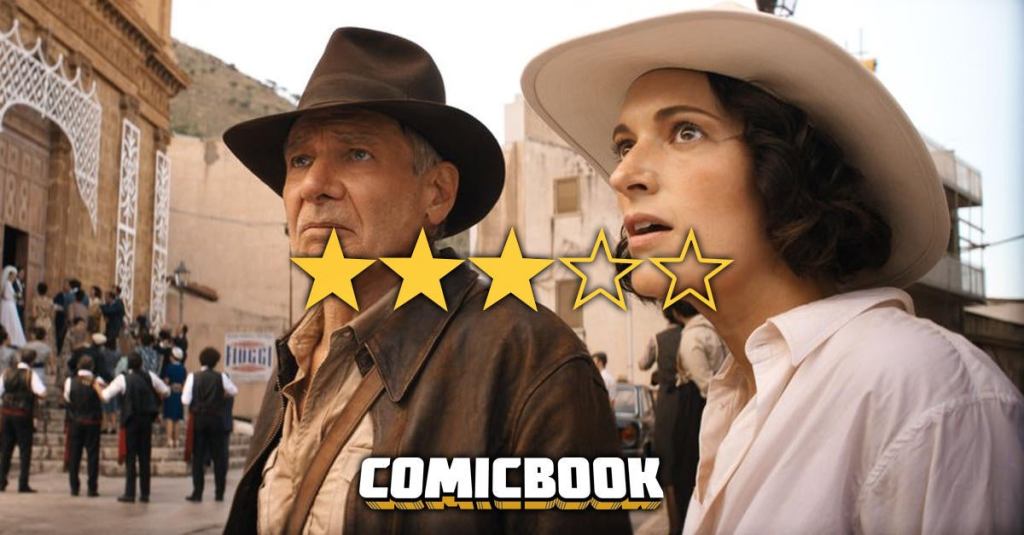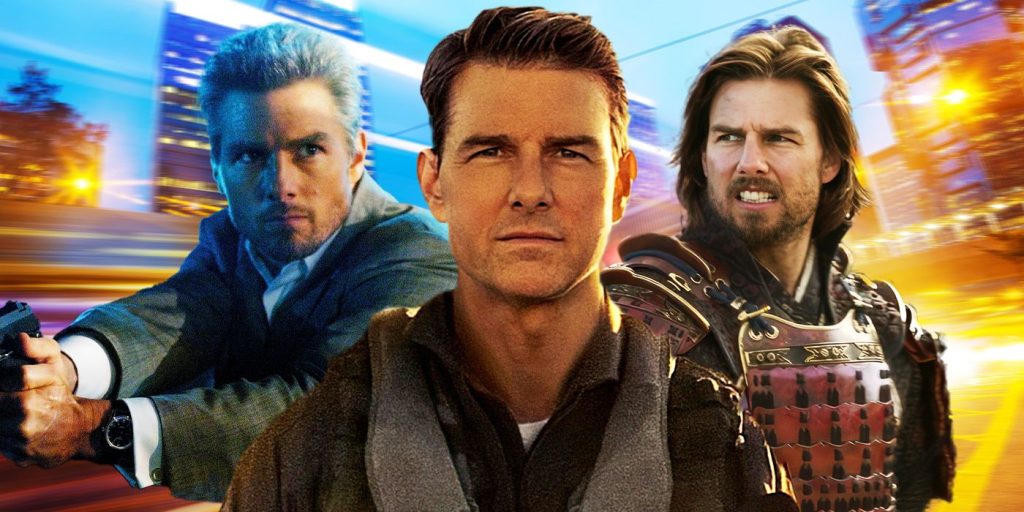
Indiana Jones and the Dial of Destiny (2023) marks a poignant chapter in the saga of one of cinema’s most iconic adventurers. Directed by James Mangold, this film not only serves as a thrilling action-packed journey but also as a bittersweet farewell to Indiana Jones, as Harrison Ford takes on his legendary role for what is likely the final time. The movie is set against the backdrop of 1969 and follows Indy’s quest to find the mysterious Dial of Destiny, a powerful time-turning device designed by the ancient Greek mathematician Archimedes. Along the way, Indy teams up with his estranged goddaughter, Helena (played by Phoebe Waller-Bridge), while facing off against Dr. Voller (Mads Mikkelsen), a former Nazi scientist.
In this review, we’ll explore the movie’s strengths, weaknesses, and how it balances nostalgic elements with fresh ideas. While Dial of Destiny delivers memorable action and heartfelt moments, it also falters in certain areas, leaving fans with mixed reactions.
H2: Harrison Ford’s Last Hurrah as Indiana Jones
Harrison Ford’s return as Indiana Jones is undoubtedly one of the biggest draws for fans of the franchise. In Dial of Destiny, Ford’s portrayal of an older, more vulnerable Indiana Jones is both heartfelt and poignant. The film marks a shift from the usual action-packed, globe-trotting escapades to a more introspective look at a hero who’s aging and coming to terms with his legacy.
Ford’s performance brings a nuanced depth to the character, capturing both Indy’s determination and his growing sense of vulnerability. As an older man, Indy’s physical abilities may not be what they once were, but his adventurous spirit remains intact, and this contrast adds emotional weight to the film.
H3: Ford’s Emotional Depth and Vulnerability
Ford’s portrayal of an older Indy is one of the film’s standout qualities. He infuses the character with emotional depth, portraying not just the adventurous hero, but a man who’s grappling with the passage of time. There’s a real sense of melancholy as Indy faces a world that’s moved on without him, and Ford masterfully conveys this vulnerability. Fans will appreciate seeing the iconic hero confront the realities of aging while still retaining the qualities that made him beloved.
This emotional dimension adds a layer of complexity to Indy’s character, making Dial of Destiny more than just a typical action movie. It allows for a deeper connection to the character and gives the film a sense of closure that fans of the franchise will find both satisfying and bittersweet.

H2: A Strong WWII Flashback Sequence
One of the most memorable moments in Indiana Jones and the Dial of Destiny is the WWII flashback sequence, where a de-aged Harrison Ford takes center stage. This sequence not only sets up the film’s central conflict but also serves as a tribute to the original Indiana Jones films, capturing the magic and energy that made the character iconic in the first place. The use of de-aging technology was praised for its seamless integration, allowing Ford to convincingly portray a younger version of Indy.
The flashback is an action-packed, thrilling sequence that recalls the high-stakes adventure of the earlier films. It’s a beautifully crafted scene, showcasing the filmmaking prowess behind Dial of Destiny while also evoking nostalgia for longtime fans of the franchise.
H3: The Cinematic Craftsmanship Behind the Flashback
The WWII flashback sequence is a technical triumph, with a perfect blend of practical effects, CGI, and historical accuracy. The action in this segment is intense, with Indy battling enemies amidst the chaos of war. The de-aging technology used to bring Ford back to his younger self was executed flawlessly, maintaining his physicality and charisma. This sequence, in particular, serves as a powerful reminder of why Indiana Jones became such an enduring cinematic character.
Moreover, the historical context is accurately represented, with the filmmakers paying homage to the earlier films’ dedication to adventure and history. This flashback doesn’t just serve as fan service; it’s an integral part of the narrative, providing context and setting the stage for the rest of Indy’s adventure.
H2: The New Dynamic with Helena
In Dial of Destiny, Indy is joined by his estranged goddaughter, Helena (played by Phoebe Waller-Bridge), a character who brings a fresh dynamic to the film. Helena is portrayed as strong-willed and independent, but her character is somewhat underdeveloped, leaving fans with questions about her backstory and her motivations. While Waller-Bridge delivers a solid performance, the film misses an opportunity to explore the deeper aspects of Helena’s character and her relationship with Indy.
While the chemistry between Indy and Helena is engaging, it’s not as fleshed out as it could have been. The film sets up a fascinating relationship between the two, but ultimately, their connection feels a bit surface-level.
H3: Missed Potential in Helena’s Character
One of the major critiques of Dial of Destiny is the underdevelopment of Helena’s character. While she plays a crucial role in the story, her backstory and motivations remain largely unexplored. The film hints at a deeper connection between Helena and Indy, but it never fully dives into their past or the emotional complexities of their relationship. This missed opportunity prevents Helena from becoming a fully realized character, leaving some viewers wishing for more depth in her storyline.
While Waller-Bridge’s performance is enjoyable, the lack of exploration into Helena’s character dynamics with Indy is a letdown, especially considering the potential for a more meaningful emotional connection between the two characters. As a result, Helena feels more like a plot device than a fully fleshed-out protagonist in her own right.

Conclusion: A Bittersweet Farewell to a Legend
As Indiana Jones and the Dial of Destiny concludes, it becomes clear that this is not just the end of an adventure—it’s the end of an era. Harrison Ford’s emotional performance as an aging Indiana Jones brings the character to a place of closure, making this film a fitting, albeit imperfect, farewell. While the action sequences and historical adventures continue to thrill, the film is also about acknowledging the passage of time and the legacy of the iconic hero.
Stay tuned for the second half of the review, where we’ll dive into the film’s action sequences, pacing, and the conclusion of this legendary franchise!
For more reviews on blockbuster films and the legacy of iconic characters, check out our Indiana Jones film analysis and Harrison Ford’s career highlights.
H2: Exciting Action Sequences and Global Locations
One of the trademarks of the Indiana Jones franchise is its thrilling action sequences, and Dial of Destiny delivers on this front. From high-speed chases to intense fight scenes, the film keeps the audience on the edge of their seat. The action is not only well-choreographed but also perfectly integrated with the story, ensuring that the stakes feel high and the adventures feel truly global.
The film takes viewers to various international locations, including authentic ancient Greek ruins, providing a fresh setting for the familiar treasure-hunting antics. This is a welcome change from the typical locations seen in the previous films, and it adds a sense of discovery and excitement to the film’s visual appeal.
H3: Action Scenes and Their Contribution to the Film
The action scenes in Dial of Destiny are as spectacular as you’d expect, with Indy once again defying the odds. The set pieces, particularly the chase scenes, are fast-paced and thrilling, ensuring that the film retains the adventurous spirit of the previous installments. But what sets this film apart is how the action sequences are tied to the emotional journey of the characters. Indy’s age and vulnerability make the action feel more grounded, as every leap and punch carries more weight than before.
The use of practical effects alongside CGI makes these scenes feel authentic, giving the audience the immersive experience they crave. These action moments, combined with the global locales, keep the film exciting and vibrant while reminding us of the franchise’s adventurous roots.

H2: Mixed Reactions to the Third Act and Pacing
While the first two acts of Dial of Destiny are filled with action and adventure, the third act has left many viewers with mixed feelings. Some critics have pointed out that the film’s pacing slows down in the final stretch, with the third act feeling more conventional compared to the earlier, more dynamic parts of the film.
The transition from globe-trotting treasure hunts to a more introspective and sentimental conclusion leaves some viewers longing for more action. It’s not that the third act lacks emotion—it’s simply that the shift in tone and pace doesn’t fully live up to the energy of the rest of the film. As Indy faces his final adventure, the pacing feels more drawn-out, lacking the same sense of urgency that defined the earlier parts of the movie.
H3: Conventional Storytelling in the Final Act
The film’s reliance on nostalgia and familiar tropes in the third act may work for long-time fans of the franchise, but it doesn’t feel as fresh or innovative as the previous Indiana Jones movies. The story reaches a conclusion that ties up all the narrative threads, but it does so in a way that feels a bit too conventional and predictable. Some of the excitement that was present in the first two acts is lost in this final stretch, making it feel more like a typical blockbuster ending.
While not entirely disappointing, the film’s conclusion leaves some questions unanswered, particularly when it comes to character dynamics and motivations. The third act may lack the edge-of-your-seat thrill that fans have come to expect from an Indiana Jones film.
H2: The Film’s Nostalgia Factor vs. Innovation
Indiana Jones and the Dial of Destiny leans heavily on nostalgia, especially with the return of Harrison Ford in the titular role. For many fans, this nostalgic element is a major part of the film’s charm, as it allows them to reconnect with the beloved character they’ve followed for decades. The film does a great job of honoring the legacy of the franchise, especially with the WWII flashback sequence and the many callbacks to previous films.
However, while nostalgia is important, it doesn’t entirely carry the film. Some critics argue that Dial of Destiny relies too much on the past without introducing enough fresh elements to make it feel innovative. The film introduces new characters, like Helena, and offers new global locations, but the central narrative and some of the character arcs feel repetitive, echoing the same themes and beats from previous films in the series.
H3: A Joyous but “Bombastic” Finale
The film’s finale, while emotional and satisfying in some ways, can also feel a bit “bombastic” in its execution. The nostalgia-driven elements do provide some emotional weight, but there’s a sense that the film doesn’t fully live up to the magic and excitement of earlier Indiana Jones adventures. The action feels familiar, and while it’s still entertaining, it doesn’t offer much new in terms of storytelling or innovation.
For fans who were hoping for a truly groundbreaking conclusion to the franchise, the film’s reliance on nostalgia can sometimes feel like an easy way out. It’s not that Dial of Destiny doesn’t deliver—rather, it sometimes feels like it’s relying too heavily on past successes rather than pushing the boundaries of what an Indiana Jones film can be.

H2: Conclusion: A Solid But Imperfect Ending
Indiana Jones and the Dial of Destiny offers a fitting, though imperfect, conclusion to the legendary adventurer’s story. Harrison Ford’s performance as an aging Indy is heartfelt, bringing emotional depth to a character many fans hold dear. The action is exciting, and the film’s globe-trotting nature adds freshness to the franchise. However, the film falters in its pacing, particularly in the third act, and sometimes leans too heavily on nostalgia.
H3: Is It the Perfect Indiana Jones Film?
While Dial of Destiny provides an enjoyable and respectful ending to the series, it doesn’t quite reach the heights of the original trilogy. It’s a fun, nostalgic ride that satisfies fans of the franchise but falls short of being a truly groundbreaking Indiana Jones adventure. Ultimately, it serves as a proper send-off for a beloved character, even if it doesn’t reinvent the wheel.
Indiana Jones and the Dial of Destiny is a solid movie that balances adventure with emotional stakes, though it doesn’t quite recapture the magic of the earlier films. For fans, it’s a fitting end to the saga, but it may not be the epic conclusion that everyone was hoping for.
For more insights into the Indiana Jones franchise, check out our Indiana Jones Legacy and Harrison Ford’s Iconic Roles.



